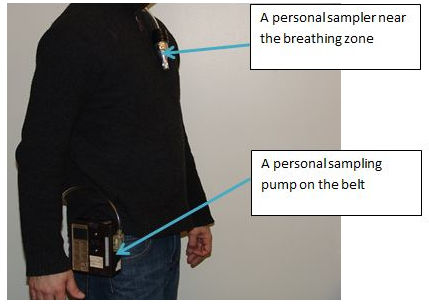06.A.03 Testing and Monitoring.
- Approved and calibrated testing devices must be provided to measure hazardous or toxic agents and environments. Devices must be labeled with calibration information (name of individual performing the calibration and date of the most current calibration). Calibration results must be maintained in a calibration log.
- Individuals performing testing and monitoring must be trained in hazards and testing and monitoring procedures. Testing devices must be used, inspected, and maintained in accordance with the manufacturer's instructions, a copy of which must be maintained with the devices.
- NIOSH, OSHA, Environmental Protection Agency (EPA) or DA sampling and analytical methods or other independently verified sampling and analytical methods must be used. Laboratories used for analysis must be accredited by nationally recognized bodies, such as the American Industrial Hygiene Association (AIHA), for the type of analysis performed.
- Determination of the concentration of, and hazards from, hazardous or toxic agents and environments must be made by a qualified industrial hygienist or other competent person during initial startup and as frequently as necessary to ensure the safety and health of the workers or other potentially exposed individuals.
- Records of testing/monitoring must be maintained on site and must be available to the GDA or SOHO for USACE operations upon request.
06.A.04
The following methods ("Hierarchy of Controls") must be utilized for the control of exposure to hazardous or toxic agents and environments and must be followed in the order below, unless infeasible:
- Substitution: if the substitute process or product is determined to provide the same outcome and to be less of a hazard;
- Engineering controls: (i.e., local/general ventilation), to limit exposure to hazardous or toxic agents and environments within acceptable limits;
- Work practice controls: when engineering controls are not feasible or are not sufficient to limit exposure to hazardous or toxic agents and environments within acceptable limits;
- Appropriate PPE (i.e., respirators, gloves, etc.) and associated programs: must be instituted when engineering, work practice controls, or material substitution are not feasible or are not sufficient to limit exposure to hazardous or toxic agents;
- Regular housecleaning (work and break area surface cleaning) and personal decontamination procedures: must be instituted in areas where the operations generate toxic dust and fume hazards. The frequency of surface cleaning and of decontamination procedures is dependent on the nature of the hazard, and frequency and risk from the exposure and must be documented in the Project Safety and Occupational Health (SOH) Plan or Accident Prevention Plan (APP).
Knowledge Check Choose the best answer for the question.
6-2. Which of the following controls is used to limit exposure to hazardous or toxic agents and environments within acceptable limits?
You forgot to answer the question!

